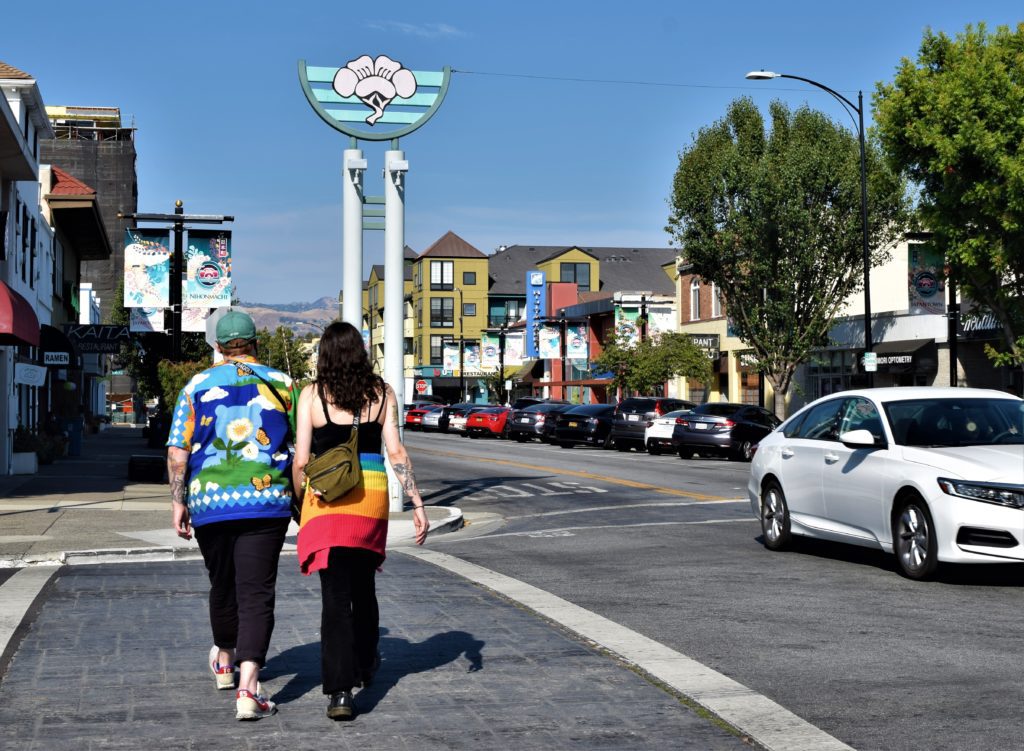It’s tough to talk about housing in Santa Clara County without looking at the region’s history of redlining, a tool that once contributed to racial segregation and discrimination across the U.S. for decades.
The term appears in conversations on topics ranging from political representation and community governance to historic districts and land use policy.
A recent city report shows racial segregation still runs deep in San Jose, with disparities in race and income depending on what side of Highway 101 residents live. Residents tend to be more white west of the highway, with high concentrations of white neighborhoods in Willow Glen and Cambrian, and some concentrations of Asian residents. Residents tend to be Latino and Asian east of the highway, with high concentrations in Alum Rock.
“San Jose’s a very segregated space,” said San Jose State University professor Scott Myers-Lipton. “White people did not want to live by Black people historically in this country, so they created mechanisms, and one of them was redlining.”
The term has a complex history and has taken on several meanings that don’t apply to the original concept, according to Stephen Menendian, research director at the Othering & Belonging Institute, an inclusive policy think tank based out of UC Berkeley. Redlining helped drive segregation by discouraging investment in integrated neighborhoods.
“When people use the term redlining, they’re using it in a symbolic fashion to refer to basically any public discrimination in housing subsidies or housing access or housing mortgages and insurance, specifically federal discrimination,” Menendian told San José Spotlight. “That’s really not what redlining is.”
Redlining originated in the 1930s, when a short-lived bureaucracy called the Home Owners Loan Corporation was created to slow the rate of foreclosures during the Great Depression, Menendian said. The corporation enacted a program to determine the creditworthiness of different neighborhoods, and created color-coded maps to indicate the level of risk posed by approving a mortgage in a certain area.
The colors ranged from green—the highest, safest rating—to red, deemed a “hazardous” area for investments. Many maps published during the Home Owners Loan Corporation’s time can be found online, including one for San Jose.
A San Jose map published by the corporation in 1937 shows the area of Japantown highlighted in red. Notes on the map say the area suffers from an “infiltration” of low-income people, with 10% of the population estimated to be Black.


“This is typically an Oriental and Negro center and contains the largest concentration of these races in the city,” the map reads. “A Negro church is located in the south-central part and a Japanese church in the north-central part.”
However, it was not until the establishment of the Federal Housing Administration in 1934 that redlining took its strongest effect, Menendian said. The administration provides mortgage insurance, protecting lenders against losses from home loans.
The Federal Housing Administration did not use the maps to determine applicants’ creditworthiness. Instead, it created its own maps using the Home Owners Loan Corporation’s methodology, Menendian said, many of which have been lost to history. The administration analyzed residents’ race, income and occupations when determining the creditworthiness of a neighborhood.
“The FHA did not exclude Black applicants from consideration as a matter of policy, and financed roughly 70,000 loans for Black purchasers from the 1935 to the 1950 period,” he said. “Here’s the trick: this was only a fraction of the rate at which it financed white borrowers.”
Menendian said the agency was not systematically excluding Black homebuyers, but the redlining of maps did result in banks issuing far fewer home loans to Black applicants.
“Some people think that redlining refers to a policy of systematically denying home loans to Black homebuyers. That’s not what redlining is,” he said. “Redlining is saying that homebuyers in redlined neighborhoods are higher-risk, and therefore should be approved with a higher degree of scrutiny and (at) a lower overall rate.”
The Federal Housing Administration’s mortgage insurance guidelines explicitly referenced race and promoted segregation.
“If a neighborhood is to retain stability it is necessary that properties shall continue to be occupied by the same racial and social classes,” the administration’s underwriting manual from 1935 reads. “A change in social or racial occupancy generally leads to instability and a reduction in values.”


Kevin Stein, deputy director of the California Reinvestment Coalition, said banks and other lending institutions may have ultimately denied Black applicants’ home loans, but the Federal Housing Administration’s risk assessments guided the actions.
“It’s hard to imagine something that is more systemic than that… for the federal government to say, ‘We’re developing a policy that makes it far less likely that financial institutions will make loans, primarily on the basis of the race of people who live in those neighborhoods,’” Stein told San José Spotlight. “The effects of those maps are profound.”
Stein said his organization works to ensure financial institutions serve communities of color, and he defines redlining more broadly.
“Redlining, one way to look at it, is when entire neighborhoods and communities are systematically excluded from access to the financial mainstream,” Stein said. “One form that can take is banks not lending, not providing credit, or not providing good credit in certain neighborhoods… those neighborhoods have generally tended to be neighborhoods of color.”
Stein said all communities must come to terms with the history of discrimination, which has created wide wealth disparities.
“This is something that we need to come to grips with and figure out,” Stein said. “How do we remedy the effects of discrimination that have gone on for quite some time?”
Myers-Lipton questioned whether today’s residents and lawmakers are doing enough to counteract the legacy of such policies.
“What are they doing to break down segregation that the white people created?” Myers-Lipton asked. “What are we doing, now that we’re a multiethnic society, to say we need to have policies that promote integration rather than segregation?”
Contact Sonya Herrera at [email protected] or follow @SMHsoftware on Twitter.



Leave a Reply
You must be logged in to post a comment.